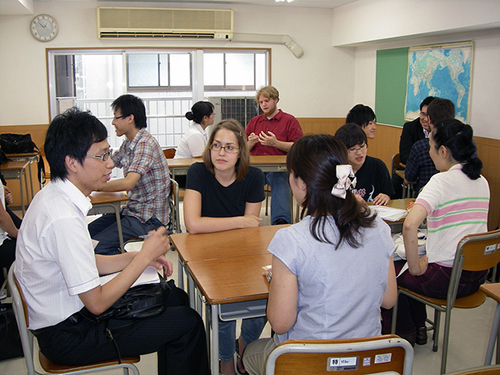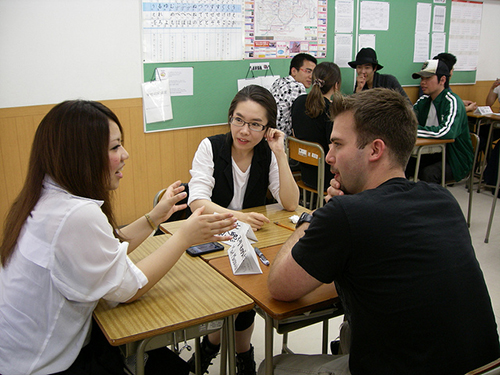
Aizuchi: Japanese Interjections for Polite Listening
Aizuchi (相槌) is the term for interjections in Japanese. In a Japanese conversation, it is customary and polite to make frequent phatic (social task) expressions to indicate that you are actually listening. It reassures the speaker that the listener is actively participating in the discussion. Non-native speakers of the Japanese language often misinterpret Aizuchi as the listener fully understanding or agreeing with what the speaker is saying but it is not always the case.
 Aizuchi can be compared to the English words, “got it”, “yeah”, “go on”, “uhuh” and the like but are said in a more pronounced and engaging manner.
Aizuchi can be compared to the English words, “got it”, “yeah”, “go on”, “uhuh” and the like but are said in a more pronounced and engaging manner.
In an article in Journal of Pragmatics (2007) by S. Kita, and Ide, entitled “Nodding, aizuchi, and final particles in Japanese conversation: How conversation reflects the ideology of communication and social relationships” (page 1251), we find a description of aizuchi:
“Its etymology goes back to a technical term in Japanese traditional sword making. To make a sword, the master and the assistant hammer the iron alternately with a regular rhythm. The master, with a small hammer, sets the pace and instructs the assistant with a big hammer where to hit next. The assistant’s blows physically shape the sword out of a lump of hot iron. Aizuchi originally referred to this assistants’ blow, which must carefully follow every master’s blow and yet plays a major role in shaping the sword.”
 Just like when practicing aizuchi, the listener acknowledges the speaker by grunting or exclaiming in forms of verbal utterance, at times accompanied with nods to indicate active listening. When conversing in the Japanese language, interjections make the conversation go a lot smoother.
Just like when practicing aizuchi, the listener acknowledges the speaker by grunting or exclaiming in forms of verbal utterance, at times accompanied with nods to indicate active listening. When conversing in the Japanese language, interjections make the conversation go a lot smoother.
In fact, two-thirds of the conversation in Japanese is composed of utterances and grunting which overlap with the speaker most of the time. This is thought of as the proper and polite way to converse in Japanese.
Some examples of aizuchi:
“sō desu ne” = I see
“honma” = Really
“hai”, “ee”, or “un” = Yes
“sō desu ka” = Is that so?
“So nan da!” = Oh, that’s right!
